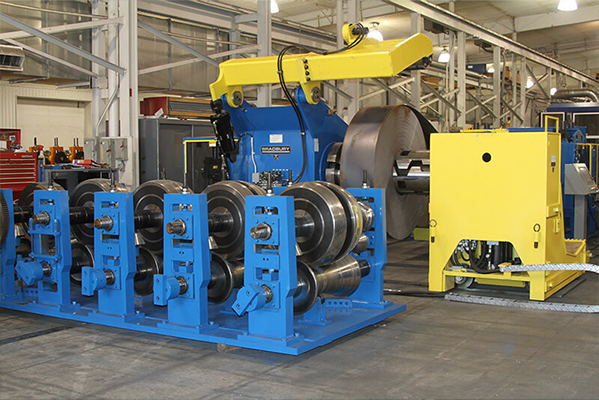Navigation Menu
Contact Us
- Email:
- info@wxavatar.com
- Address:
- Yurong Village, Yuqi Street, Huishan District, Wuxi, China.
Release Date:Jul 28, 2025 Visit:57 Source:Roll Forming Machine Factory
The manufacturing industry continues to evolve as automation becomes more sophisticated. A key aspect of this transformation is the integration of auxiliary machines—secondary equipment that supports primary production lines—into fully automated workflows. Manufacturers are adopting advanced strategies to ensure seamless coordination between primary and auxiliary systems, improving efficiency and reducing downtime.

The Role of Auxiliary Machines in Automation
Auxiliary machines include conveyors, feeders, sorters, inspection systems, and packaging units. While not the core production equipment, these machines play a crucial role in maintaining smooth operations. Integrating them into automated workflows ensures that material handling, quality control, and post-processing occur without manual intervention.
Key Integration Strategies
1. IoT-Enabled Connectivity
Manufacturers are equipping auxiliary machines with IoT sensors to monitor performance in real time. These sensors collect data on machine health, operational speed, and energy consumption, allowing for predictive maintenance and reducing unexpected breakdowns.
2. Centralized Control Systems
Advanced manufacturing execution systems (MES) and programmable logic controllers (PLCs) are being used to synchronize primary and auxiliary machines. This centralized approach ensures that all equipment operates in harmony, adjusting speeds and workflows dynamically.
3. Robotic Coordination
Collaborative robots (cobots) are increasingly deployed alongside auxiliary machines to handle tasks like part loading, unloading, and sorting. These robots work in sync with conveyors and feeders, minimizing bottlenecks.
4. Modular Design for Flexibility
Manufacturers are adopting modular auxiliary machines that can be easily reconfigured for different production needs. This adaptability allows quick adjustments when switching product lines or scaling operations.
5. Automated Quality Checks
Vision systems and AI-powered inspection tools are being integrated into auxiliary workflows to detect defects early. These systems work alongside sorting machines to remove faulty products without disrupting the main production line.
Benefits of Seamless Integration
Improved Efficiency – Reduced manual handling speeds up production cycles.
Lower Operational Costs – Automated workflows minimize labor dependency.
Enhanced Precision – Consistent machine coordination reduces errors.
Scalability – Modular systems allow for easy expansion.

Future Trends
As Industry 4.0 advances, manufacturers will increasingly adopt AI-driven optimization for auxiliary machines. Machine learning algorithms will fine-tune equipment performance, further reducing inefficiencies. Additionally, 5G connectivity will enable faster communication between machines, supporting real-time adjustments in large-scale operations.